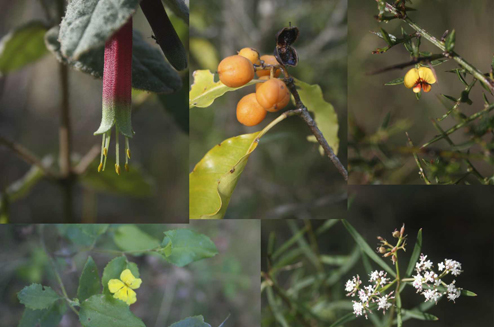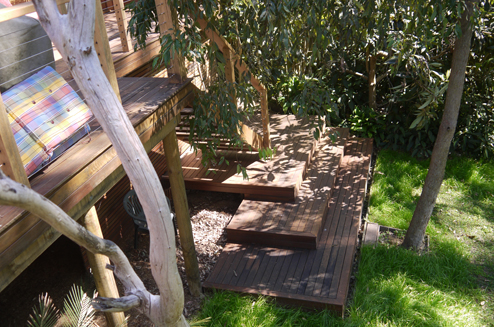
Cultural Pathways Leading To An Integrated Understanding Of Living In Australia
Cultural Pathway 1: The Place of Heritage
The theme of the National Trust Heritage Festival during April 2006 was “Industrial Heritage: Our Working Lives.” The role that science has played in the development of our past and present cultural achievements was celebrated across Australia. The role of Building Science and its application was acknowledged as integral to this inheritance, and its appreciation was acknowledged as essential to a wider understanding of our cultural heritage.
It is worth remembering that the word heritage is derived from that which we inherit. It is also worth remembering that the idea of cultural significance includes among its central attributes technical and historic values. In order to establish the cultural significance of a place, heritage workers must analyse its background and those forces that lead to its development. We will commonly use the framework used in heritage assessment and management known as Australian Historic Themes. In relation to industrial development references can be found to exist within the major Theme Groups:
Theme 3: Developing Local, Regional and National Economies
Theme 4: Building Settlements, Towns and Cities and
Theme 5: Working
Historian Geoffrey Blainey conceived the term ‘the tyranny of distance’ (Blainey 1982). It is a concept that usefully describes an overriding contingency of living in Australia, past and present. The eighteenth and nineteenth centuries brought technological development that made it possible to link Australia to distant marketplaces, and the search for a staple upon which to found secure regional economies drove much early European exploration.
Under Theme 3: Developing Local, Regional and National Economies our industrial heritage can be seen to have played an important role in historic sub-themes such as:
- Exploring the coastline
- Surveying the continent – prospecting for precious metals
- Utilising natural resources – tapping natural energy sources
- Developing primary production – developing agricultural industries
- Establishing communications
- Moving goods and people
- Farming for commercial profit
- Altering the environment
- Feeding people
- Developing an Australian manufacturing capacity
- Developing an Australian engineering and construction industry
- Inventing services
Under Theme 4: Building Settlements, Towns and Cities, we find the sub-groups of:
- Planning urban settlements
- Supplying urban services (power, transport, fire prevention, road, water, light and sewerage).
Theme 5: Working, is not explored further here.
With these considerations in mind, we can see that the heritage system is deeply informed with the recognition of the role that industrialization and the provision of technical services have played in developing the Australia that we know today. Localness Introduction

Cultural Pathway 2: Engaging the Elements
How do we engage the elements? By embracing the new cultural pathway that links Australia’s Natural Heritage with our society’s current attempts to live here in a more successful and responsible way. This includes examining former cultural understandings and practices of resource management and being prepared to question prevailing ideologies, including the idea of sustainable development (ESD).
This then, forms the basis of an emerging understanding of Cultural Heritage that appreciates the past and yet is also forward looking. It incorporates concepts that are currently seen as separate and distinct into a single complex. We need to conduct a debate about the now entrenched paradigm of sustainability versus the new insights from biology that sees dynamic change as the essential element of the operations of the natural world.
The Post-Darwinian View
The history of life on Earth as portrayed by Darwin (1859) was one of gradual evolution driven by natural selection towards ever more complex forms forming a progressive cone of diversity through time, and where a balance of nature prevailed in most ecological communities. Although there is some truth in this view, it is now known that evolution and ecology are not always so comfortably predictable. Rather, chance has played a big part in determining the composition of the world’s biota, particularly during the five big mass extinctions over the past 500 million years. Periods of gradual change have been interspersed with geologically instantaneous events where luck has determined which lineages went extinct and which survived.
Interestingly, such historical contingency also plays a key role in determining the composition of ecological communities. In concluding a keynote address dealing with the conservation of biodiversity, Emeritus Professor of Zoology A. R. Main concluded:
“Rather than such communities existing in a balance of nature dictated solely by physical environmental factors, or returning to a balance following disturbance, current community ecology has identified that dynamic change is the norm.
Communities change through time, often unpredictably, depending upon which species are present first and the sequences in which others invade. Main puts it like this:
“…although the balance of nature and stable populations are widely and strongly held beliefs, there is sufficient empirical evidence to cast doubt upon them. Nature that is in dynamic equilibrium governed by chance events may be more realistic but conservation has to take place in the natural as well as the social environment.
Success of conservation in the natural environment will depend on better knowledge of the way that nature works. It cannot be assumed that nature is a self-regulatory entity that will return to a prior state after disturbance.
Additionally, implementation of sound, long term conservation practices will depend on a more understanding social environment which can be provided only by an informed, biologically educated public which can comprehend the agendas implied by the current catch-phrases – retention of biodiversity and sustainable development – which contain an implied belief in the balance of nature and stable populations. A truly romantic view of nature.” (Hopper 1996)
If the concept of sustainability is questionable as an embedded social paradigm, then how does that change the way we view our relationship to the elements?
The built environment is the interface between the natural and the cultural worlds.
We inherited the European determination to dominate our new environment and to make it adapt to us. This abiding aspect of our European cultural heritage has played itself out in many ways and has resulted in a great deal of inappropriate decision making with deleterious impacts, and often disastrous consequences. A culture that is incapable of forming an identity inspired by its unique environmental contexts, is bound to lack an underlying ethos that is based on the land, it risks becoming second rate, and is likely to prove unsustainable in the longer term. The wiser course is unquestionably the reverse of the urge to dominate; rather it is the capacity to respect what is here, to adapt to its contingencies, and to learn how best to live with it. As a society, we may be more vulnerable than is commonly understood.
What can we learn from the way ‘the elements’ are configured in Australia?
The easy answer is that we must learn to be more conservative and frugal with our usage of natural (including biological) resources. This has is of special importance in how we build things.

Elemental Relationships In Australia
Australia is a land of deep antiquity, having undergone countless cycles of weathering without renewal. As continents go, Australia is mostly low, flat and dry, with landscapes that are old and soils poor in nutrients. Yet this is also part of the reason why there is such biodiversity. It is still one of the most challenging places on earth. We often take its unique characteristics for granted, yet it is worth reminding ourselves of some the more salient ones:
- Two thirds is arid: classified as desert;
- Sand dunes cover nearly half of the continent;
- Vast, and isolated from all others for 40 million years
- Driest vegetated continent on earth: in places, no rain for years at a time;
- No regular predictable pattern of rain in the centre;
Most regular rainfall is in the wet tropical north – wet years mean that waters can flow inward to the continent’s interior; - Lake Eyre is earth’s largest dry salt lake, fills about twice in 100 years;
Surrounded by 3 oceans; - The world’s largest island;
- The only nation state that comprises a continent;
- Earth’s flattest continent;
- World’s longest unbroken cliffs along the Nullarbor;
- Shares no land borders with another country;
- Some of the worlds oldest rocks, remnant mountain ranges and a vast inland sea at its heart;
- Many living links with past eras of life on earth – Gondwanan species still present, Antarctic beech trees up to 5000 years old;
- Unique biota, adapted to harsh, fickle conditions; survival strategies refined by poverty and adversity, subtle and resourceful adaptations, minimized need for water in low nutrient soils;
- Separate biota in the west and east;
- A strategy of opportunism characterises both plants and animals as availability of food, not seasonal changes, drives reproduction;
- Much faunal life hidden underground by day, many nocturnal species;
- Incredible profusion and variety of biota in spite of environmental challenges:
- 4000 species of ants, Earth’s greatest variety of lizards: eg, 47 varieties of (ant eating) in one small area;
- A ship of refuge for an alternate order of ancient life.
A ship of refuge for an alternate order of ancient life.
These broad characteristics have varied applicability at a local level. Sand dunes are only connected to beaches for a resident of coastal NSW, for instance. And an Alice Springs local does not have to deal with Lake Eyre’s vagaries on a daily basis. But a landscape designer in Byron Bay or Tamworth must be conscious of the east-west split in the flora, or they may be at risk of specifying an inappropriate variety of wattle, for instance. The need to have a local understanding must be explained in some detail.

Time depth: A key aspect of Natural Heritage Significance
An appreciation of both the geologic and evolutionary time scales helps us to understand where we have come from, and what we see around us in the present. Deep time, especially in the context of our ecological and natural environmental inheritance, has the potential to inspire feelings of awe, reverence and respect. These attributes of appreciation can enrich our culture and impact on our relationship to the management of natural resources.
To restate the social imperative: implementation of sound, long term conservation practices will depend on a more understanding social environment which can be provided only by an informed, biologically educated public which can comprehend the agendas implied by the current catch-phrases – retention of biodiversity and sustainable development. Seddon and others have called for a set of national reserves that constitute a Green Museum where professionally conducted tours of remnant Australian Gondwanan floral riches may be undertaken. He feels that “experience of them should be a part of the identity of Australians.”
Learning to be local
Scientific discovery over the last 30 years has provided new understandings of the Australian continent; the unique qualities of our natural and environmental heritage; its forms; how it functions. Deepening into our home terrain, seeing, listening and absorbing its lessons provides the most appropriate context for sustainable relationship, and for cultural enrichment.
“Being Australian in the sense of belonging to the land has always depended on an acquired skill. It is neither a right nor a given; it has always had to be learnt, once handed down by the tribal elders to the young, and then earned by them. If there was no ‘Aboriginal nation’, in this at least the Aborigines were true Australians. It has always been a title to be earned, and so it remains.” (Seddon 2005)
Australia has its widest extent in the latitudinal 30’s, the zone of maximum climatic uncertainty. This has practical ramifications for building design in the coming half-century, as the previously assumed climate (including rainfall) enters a period of rapid change. The designer therefore needs to seek the involvement of predictive science in interpreting an appropriate design response to the information presented by tracing the cultural pathways. We can now move on to consider the technical aspects of sustainable building design.
Words and ideas: produced as a collaborative between Trevor King and Dick Clarke.
Localness – Cultural Pathways
Localness – Sustainable Development
Localness – So what does it all mean?




















